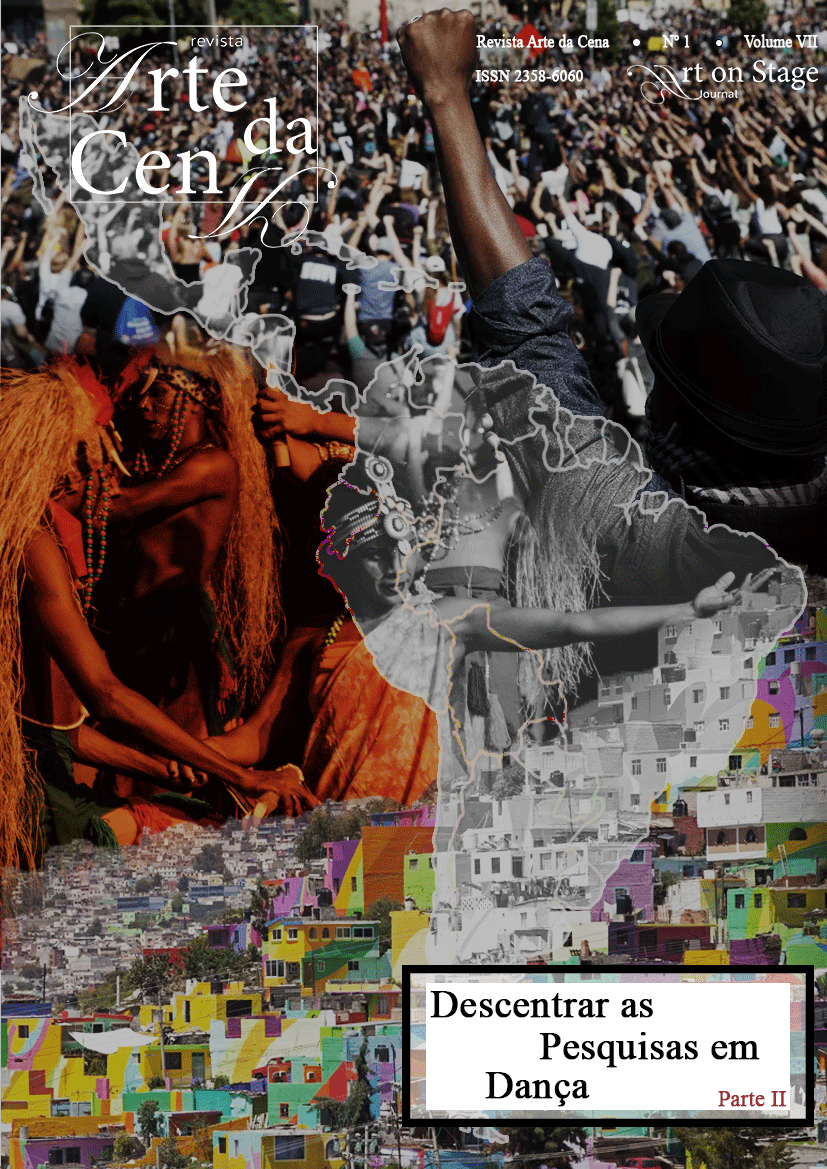Vol. 7 No. 1 (2021): Decentering Dance Research (Part II)

This issue is the result of the volume of research interested in carrying out a work of decentralization of dance studies which allows different reflection instances, based on the diagnosis that the practices of academic and artistic research still participate in the construction and maintenance of discourses that invest in the separation between "center' and "periphery, linked to eurocentric and american-centric assumptions.
Through this dossier, objective is to favor an extension of dance corpus research, taking as reference the recent works on: cultural exchanges, post-colonial e decolonial studies; but also an exploration of the tension sites existing in the field. It’ll then be a movement to decentralize the look on dances, to decentrealing legitimizing stories, to decentralize institutional conditioning and decentralize ourselves as subjects of knowledge. We propose decentralization as a research exercise that favors the knowledge emergence and exploring the potential of dance research. In addition to its multiple and possible definitions, we understand decentralization as a critical practice and procedure in constant motion.
Guest Editors: Ana Teixeira, Isabelle Launay, Javier Contreras, Juan Ignacio Vallejos, Patricia Aschieri
Editor-in-Chief: Alexandre Nunes
Asociate Editor: Rafael Guarato


